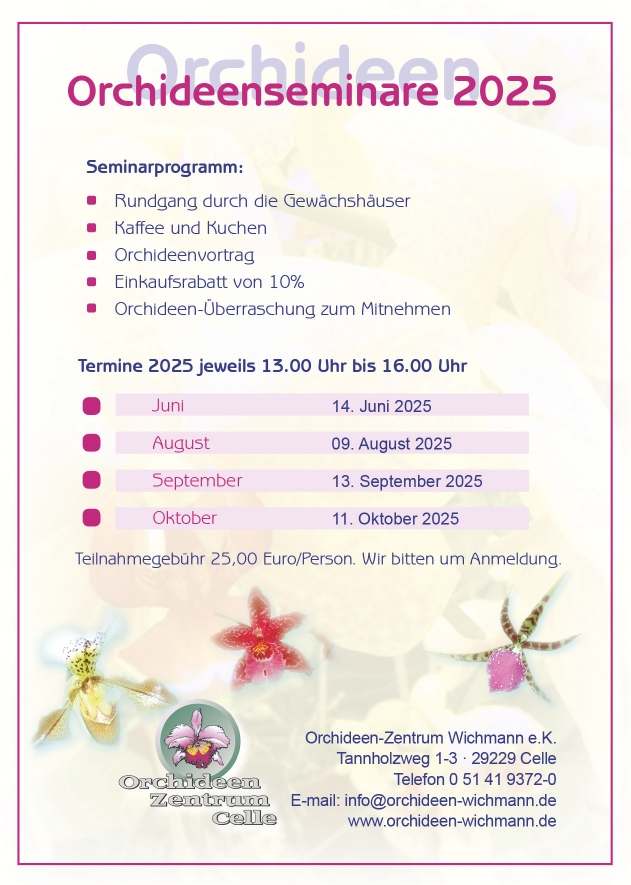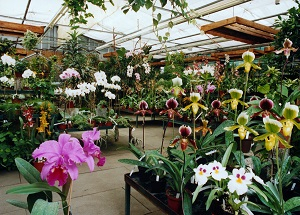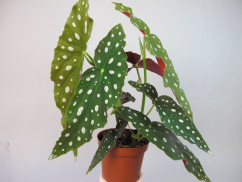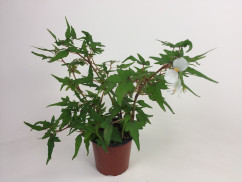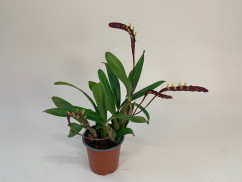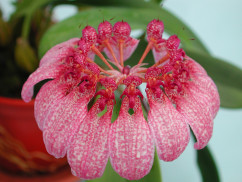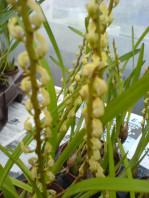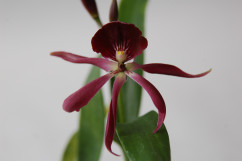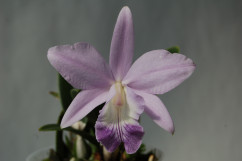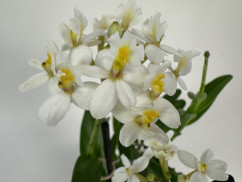Now in bloom/bud
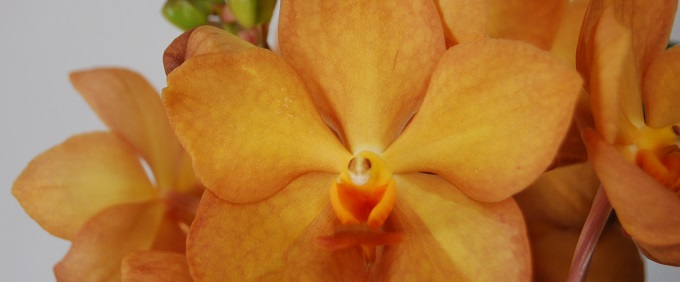
Orchids in flower
The beautiful colors of the orchid flowers, their artful forms and beguiling fragrances have enchanted us for centuries.
But actually they try to impress insects. Because with their flowers orchids promote the attention of their pollinators, in order to be ahead in the race of reproduction. How nice that they make an effort to be pretty, even though they will never reach an insect in our home.
The variety of orchid flowers makes collecting these precious pieces so appealing. There are orchids with tiny flowers only a few millimeters in size (Bulbophyllum monoliforme) and those that are fifty times larger than these smallest ones. Interestingly, you will find no natural light blue flowers, but green ones. Their beauty can comfort over the long wait until the next blossom. It sometimes comes only once a year.
When you buy an orchid, it is often declared as flowering or strongly flowering. This means that it is currently out of flower, but old enough to flower in the foreseeable future. In addition to flowering strength and exciting shapes, colors and scents, orchid cultivation also selects for the durability of the flowers. As a result, record-breaking flowering times have been achieved in Phalaenopsis, which can be measured in months rather than weeks.
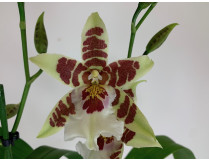
Aliceara Renaissance 'White' (2 Rispen)
- flower season: winter - spring
- temperature: moderate (16 - 20 °C)
- Mehr Details
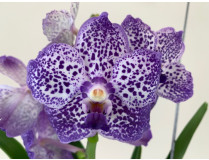
Ascocenda Blue Saphire (in Blüte/Knospe)
- flower season: whole year
- temperature: warm (20 - 24 °C
- Mehr Details
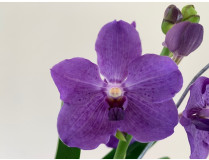
Ascocenda Just Blue (in Blüte / Knospe)
- flower season: whole year
- temperature: warm (20 - 24 °C
- Mehr Details
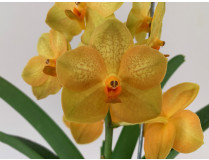
Ascocenda Magic Orange (in Knospe / Blüte)
- flower season: whole year
- temperature: warm (20 - 24 °C
- Mehr Details
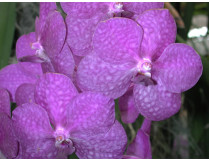
Ascocenda Princess Mikasa 'Blue' (in Blüte / Knospe)
- flower season: whole year
- temperature: warm (20 - 24 °C
- Mehr Details
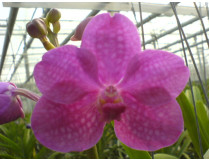
Ascocenda Princess Mikasa 'Pink' (in Blüte/Knospe)
- flower season: summer - autumn
- temperature: warm (20 - 24 °C
- Mehr Details
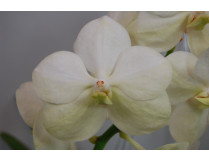
Ascocenda Princess Mikasa 'White' (in Blüte / Knospe)
- flower season: whole year
- temperature: warm (20 - 24 °C
- Mehr Details
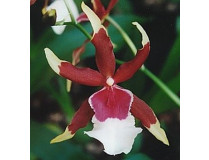
Beallara Eurostar (2 Rispen)
- flower season: whole year
- temperature: moderate (16 - 20 °C)
- Mehr Details
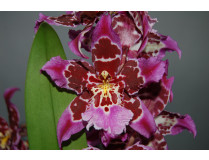
Beallara Joe's Drum Hybride (2 Rispen)
- flower season: winter - spring
- temperature: moderate (16 - 20 °C)
- Mehr Details
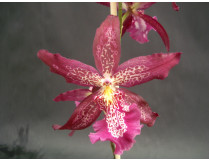
Beallara Marfitch 'Howard's Dream' AM/AOS (1 Rispe)
- flower season: summer - autumn
- temperature: moderate (16 - 20 °C)
- Mehr Details
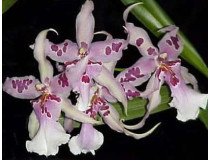
Beallara Peggy Ruth Carpenter 'Morning Joy' (2 Rispen)
- flower season: whole year
- temperature: moderate (16 - 20 °C)
- Mehr Details
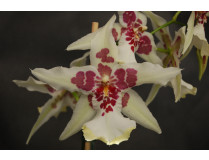
Beallara Tahoma Glacier 'Green' (1 Rispe)
- flower season: whole year
- temperature: moderate - warm (18 - 22 °C)
- Mehr Details

Bletilla Peaches and Cream (in Blüte / Knospe)
- flower season: may – july
- Mehr Details
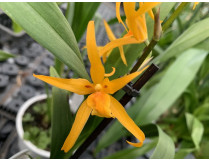
Brassada Anita (2 Rispen)
- flower season: spring - summer
- temperature: moderate (16 - 20 °C)
- Mehr Details
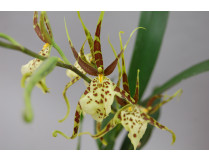
Brassia Eternal Wind 'Summer Dream' (1 Rispe)
- flower season: summer
- temperature: moderate (16 - 20 °C)
- Mehr Details
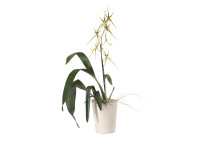
Brassia Hybride, 1 Rispe (inkl. Übertopf)
- flower season: whole year
- temperature: moderate (16 - 20 °C)
- Mehr Details
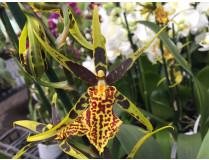
Brassidium Mystic Maze (1 Rispe)
- flower season: summer
- temperature: moderate (16 - 20 °C)
- Mehr Details
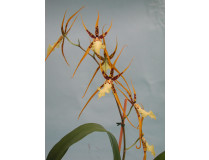
Brassidium Shooting Star 'Black Gold' (in Blüte/Knospe)
- flower season: autumn winter
- temperature: moderate (16 - 20 °C)
- Mehr Details
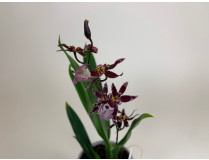
Brassidium Titanium Treasure (3-4 Rispen)
- flower season: winter - spring
- temperature: cool - moderate (12 - 18 °C)
- Mehr Details

Burrageara Barrocco Red (3-4 Rispen)
- flower season: whole year
- temperature: moderate (16 - 20 °C)
- Mehr Details
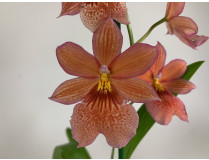
Burrageara Nelly Isler 'Orange' (2 Rispen)
- flower season: whole year
- temperature: moderate (16 - 20 °C)
- Mehr Details

Burrageara Nelly Isler 'Rosy' (2 Rispen)
- flower season: whole year
- temperature: moderate (16 - 20 °C)
- Mehr Details
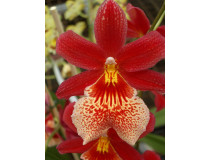
Burrageara Nelly Isler (2 Rispen)
- flower season: whole year
- temperature: moderate (16 - 20 °C)
- Mehr Details
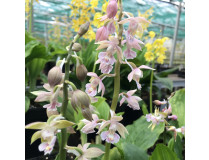
Calanthe discolor x aristulifera (in Knospe / Blüte)
- flower season: may – june
- Mehr Details

Calanthe discolor x Kozu Red (in Knospe / Blüte)
- flower season: may – june
- Mehr Details
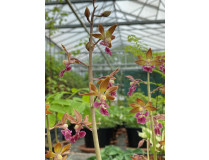
Calanthe discolor x tricarinata (in Knospe / Blüte)
- flower season: may – june
- Mehr Details
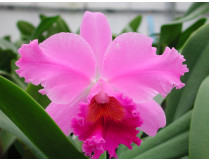
Cattleya Hybride (in Blüte / Knospe)
- flower season: winter - spring
- temperature: moderate - warm (18 - 22 °C)
- Mehr Details

Colmanara Alkmaar (2 Rispen)
- flower season: autumn winter
- temperature: moderate (16 - 20 °C)
- Mehr Details
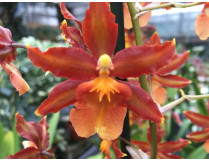
Colmanara Catathante 'Pacific Sunspots' (1 Rispe)
- flower season: winter - spring
- temperature: moderate (16 - 20 °C)
- Mehr Details

Colmanara Honey Bee (2 Rispen)
- flower season: autumn winter
- temperature: moderate (16 - 20 °C)
- Mehr Details
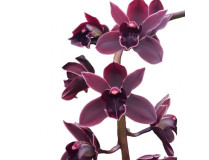
Cymbidium Cali Night (2-3 Rispen)
- flower season: april - may
- temperature: cool - moderate (12 - 18 °C)
- Mehr Details
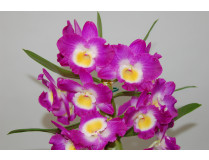
Dendrobium Comet King 'Akasuki' (2 Blütenstiele)
- flower season: winter - spring
- temperature: moderate (16 - 20 °C)
- Mehr Details
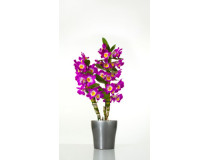
Dendrobium Comet King 'Akasuki' (2 Stiele, inkl. Übertopf)
- flower season: whole year
- temperature: moderate (16 - 20 °C)
- Mehr Details
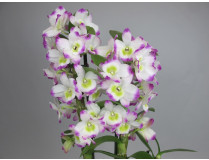
Dendrobium Irene Smile (2 Stiele)
- flower season: whole year
- temperature: moderate (16 - 20 °C)
- Mehr Details
orchids in flower
Thanks to breeding successes, it now takes minimal effort and no special technique to get an orchid to flower again. However, if you do want to help, you can set specific flowering stimuli. For some species, such as Dendrobium Phalaenopsis, it can be helpful to place them in a cooler room (not below 15°C) for a few weeks at night in autumn to encourage the next flowering.
Orchids generally like an occasional change of scenery. When cleaning the windowsill, move them to a different place, perhaps even to a different room with a different temperature, to keep them vital. If the plant is doing well, it will produce flowers regularly on its own.
Thanks to good breeding success, some varieties sometimes flower twice a year or even almost all year round. And then? A withered stem is no reason to be sad. Did you know that Phalaenopsis can even sprout again from a faded stem if you shorten it by about a third or cut it off above the second or third eye?
The time of year when an orchid flowers depends on the species; the best way to find out the flowering time is to refer to the description of the respective species. Many are in a flowering mood in spring between February and May, while others can be expected to flower all year round.
As orchids are epiphytes, their stems tend to grow sideways or even downwards, unlike other flowering plants. To bring the stems of upright orchids into an attractive upright position, they are therefore fixed to wooden stems when purchased. If you have removed the stem after the flower has wilted, you should reattach it the next time the plant flowers. It should be placed as close as possible to the base of the stem and, if possible, close to the flower stem along its entire length so that it is not bent too much or even kinked. It is fixed in place with a clip just two centimetres below the lowest flower.
There can be various reasons why flowers wither prematurely, but this is not necessarily a sign of care errors, but may be due to the location. Orchids should never be placed near fruit bowls. Fruits produce ethylene as they ripen, a gas that we cannot smell but which causes flowers to fall asleep.
Orchids also don't like being placed in freshly painted or wallpapered rooms, as the solvent vapours still bother them even when we hardly notice them. Sometimes gas connections in the neighbourhood can be the cause of excessively short flowering periods. If in doubt, the installer can check whether there is a gas connection nearby. However, it is not a bad idea to first check whether the orchid substrate is too moist. Too frequent watering and consequently diseased roots, which no longer supply the plant with sufficient nutrients, can be the cause of flowers that wilt too quickly. While an orchid is flowering, it should never be repotted, as this also damages the flowering success.
Orchid in bud
As soon as a stem emerges and announces the next bloom, you need to be patient and wait for the coming splendour. This may well take a few weeks. However, excessively dry indoor air can jeopardise the buds. If the air humidity is below 50% or the plant is directly next to a radiator, it is advisable to spray the smallest buds with water every day to prevent them from drying out.
The fact that buds fall off can also be due to too frequent watering. The production of flowers is an exhausting event for a plant that should not be underestimated, as it requires energy and nutrients. However, too much moisture causes roots to become sickly. This has a negative effect on the supply of water and nutrients, and therefore on the overall health of the plant and ultimately also on the success of flowering. But if this is not the reason, then, as with dormant flowers, location-related factors - for example, ripening gases from a nearby fruit bowl, solvent vapours in a newly renovated room or a nearby gas connection - can also be a source of problems.
In any case, your orchid will be happy to have a nice sunny and warm location to quickly turn its buds into enchanting flowers. Incidentally, now is also not a good time to repot them. Wait until the flowering phase is over and only then give it fresh substrate and more legroom in a new pot. Interesting fact: The flowering phase of an orchid has a fascinating regularity, as the oldest and plumpest buds always open before the smaller, younger ones at the tip of the stem. These take their time to develop fully, while others are already open. After all, the bud that blossomed first will also wilt the earliest.

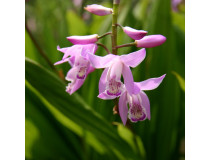
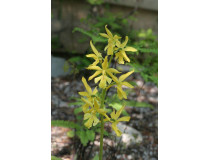
 ... to newsletter subscription
... to newsletter subscription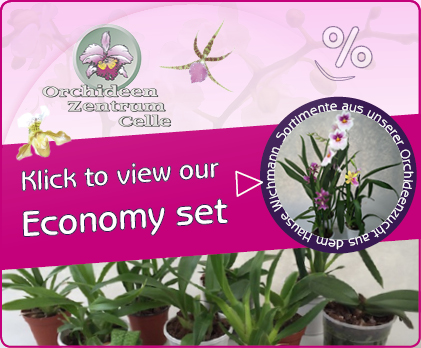 ... to see all economy sets
... to see all economy sets